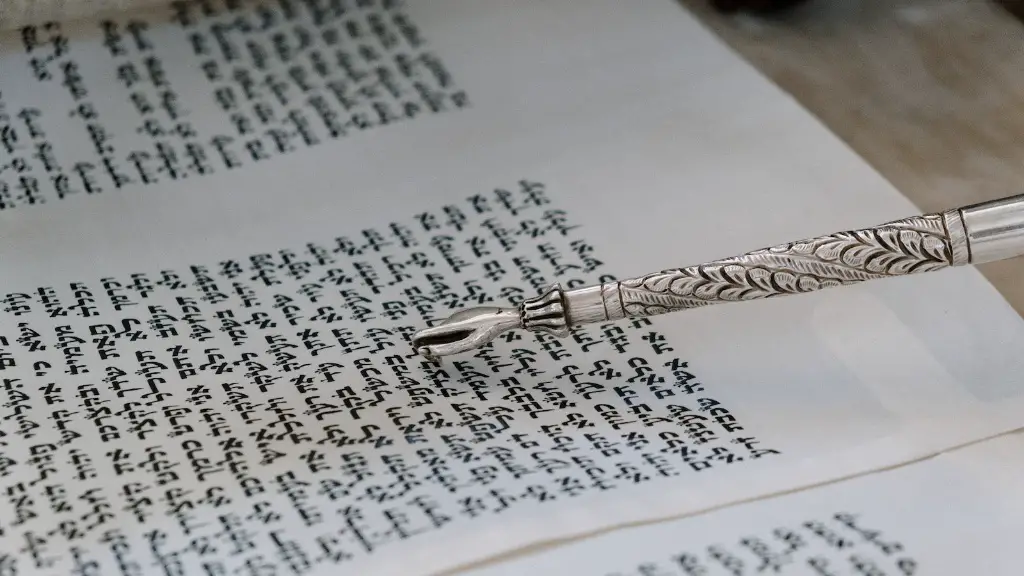Characteristics Of Victorian Poetry
Victorian poetry is often characterised by its emotive intensity and formal complexity, reflecting the social changes and challenges of the period. It is recognised for its innovative use of language, introduction of new poetic forms, exploration of unfamiliar themes and creation of vivid imagery. During this era, many different styles of poetry emerged as authors attempted to express their unique perspectives, often in an incredibly innovative and inventive way.
Victorian poets had to contend with a rapidly changing society, as the Industrial Revolution drastically transformed the economic and social landscape of Britain. Their lyrical creativity reflected a fascination with the new, progressive values associated with the period, whilst also seeking to explore the challenges of modernity and the rise of science and technology. The writers of this period were consequently renowned for their sophisticated use of language which allowed them to explore a broader range of subject matter than ever before.
Widely seen as the most important characteristic of Victorian poetry, it was its emotive intensity that captured the hearts and minds of its audience. Writers sought to document the unique blend of suffering, joy and uncertainty that characterised the Victorian era as industrialisation swept across the country. Their works presented a fascinating look at the complexities of life during this epoch, as many of their poems bridged the divide between religious and secular life. This heightened sense of emotion is reported to have a lasting influence on the world of literature today, as the writers of this era are often credited with bringing poetry to public attention.
In addition to the emotive qualities seen in Victorian poetry, the period was also indicative of a great deal of formal experimentation. Writers opened up a variety of new poetic forms, introducing the general public to metrical innovations such as the sonnet sequence and the spenserian stanza. In addition, the language used by authors was of great significance, as many incorporated contemporary scientific concepts and dialect into their works. This combination of new poetical forms and inventive language enabled poets to disseminate their work to a larger audience and consequently spread their ideas further.
Victorian poets sought to capture the unique blend of remorse and relief associated with the period, and the extensive repertoire of poetic forms and inventive language integrated by authors at this time facilitated their endeavours. Writers of the Victorian era have thus continued to have a lasting influence on literature and remain greatly remembered for the depth of emotion, complexity and inventiveness present in their works.
Imagery and Symbolism
The use of vivid imagery and symbolism has become synonymous with Victorian poetry, as authors frequently incorporated these elements into their works to create a highly detailed landscape and captivate their readers. This was often done through the use of an array of natural, historical and human images, as well as associative language associated with these topics. This imagery frequently served to bring the poetry to life and draw the reader into a new realm of thought and understanding.
A notable use of imagery and symbolism can be seen in the works of Alfred Tennyson, as he explored a variety of scientific concepts and ideas. Tennyson was particularly renowned for his use of metaphorical language to explore aspects of the natural and supernatural worlds, creating a vivid and mystical picture for his readers. In particular, his poem ‘The Lady of Shalott’ is said to be indicative of the use of symbolism and imagery in Victorian poetry, as it employs a musical and naturalistic tone which allows readers to imagine the picture Tennyson is attempting to depict.
The use of figurative language also allowed Victorian poets to express personal opinions or feelings about certain topics. This can be seen in the works of Elizabeth Barrett Browning, as her poem ‘How Do I Love Thee’ is a vivid exploration of love that employs the use of symbolic language and lyrical twists to convey its tender message. Browning enables readers to experience the power of her emotion, as her poem is not simply the expression of her feelings, it is an emotive portrayal of them.
In conclusion, the use of imagery and symbolism in Victorian poetry is a vivid illustratory tool which allows authors to express intense and imaginative ideas. This technique is seen in many works of the period, as authors sought to make delicate and complex emotions tangible through the use of associative language. As a result, many of these poems remain treasured items of literature that have a lasting influence on today’s world.
Metrical Innovation
The Victorian era was a period of Metrical Innovation, as numerous new poetic forms emerged as authors sought to traverse the complexities of modern life. This was seen as a direct result of technological changes, as many poets had access to new poetic forms and styles which enabled them to explore topics from new angles. This diversity is reflected in the range of works published during this era, as authors sought to capture both the optimism and the anxieties associated with industrialisation.
A notable example of metrical innovation can be seen in Alfred Tennyson’s poem ‘In Memoriam’, which is written in a particularly inventively structured form. The poem consists of 16 stanzas, each of which is composed of eight lines and uses a Shakespearean poetic form. This enabled Tennyson to explore a variety of different emotions and topics in an incredibly inventive way, and is an example of how authors experimented with different forms of poetry in order to convey their sentiments.
Elizabeth Barrett Browning is also renowned for the various metre styles in her works, as she used a mixture of rhyme and free verse to explore complex human emotions such as love and death in a vivid and emotive manner. Her works are celebrated for their lyrical and unconventional structure, which enabled her to engage an audience in a meaningful and powerful way.
Metrical innovation was a key element in much of the poetry of the Victorian era, as writers sought to find inventive and innovative ways to discuss challenging topics. In addition, their use of poetic forms was seen to be indicative of the way in which society was changing, as authors utilised new and unfamiliar styles to express their sentiment and capture the social challenges of the time.
Themes and Subject Matter
The themes and subject matter explored in Victorian poetry were varied and complex, and often sought to capture the emotional and conceptual changes associated with industrialisation. Writers frequently used the poetic medium to address the new culture of knowledge associated with the period, as well as discuss controversial topics such as gender, religion and psychology. This diversity can be seen in the works of Alfred Tennyson and Elizabeth Barrett Browning, who both wrote extensively and experimentally on a variety of topics.
Themes and subject matter were of great importance in Victorian poetry, and many authors sought to explore these complex topics in a vividly emotive manner. Examples of this can be seen in Alfred Tennyson’s poem ‘Ulysses’, which explores the life of the titular character after the Trojan War and draws upon emotions of regret, nostalgia and determination. The poem serves to illustrate the ephemeral nature of life and the search for reconnection with one’s past, which is an effective and powerful message.
Elizabeth Barrett Browning’s poem ‘Aurora Leigh’ is also renowned for its exploration of various topics, as the narrative poem is set during the industrial revolution and narrates the story of a young woman as she tries to come to terms with her situation. As such, it is seen to be highly relevant to the modern world, as it addresses issues of gender and social structure which continue to have relevance today.
Overall, the themes and subject matter explored in Victorian poetry were quite disparate and varied, and often sought to address a variety of issues associated with the period. Many authors used their works to explore the cultural changes associated with industrialisation and the effects of scientific advancement, whilst at the same time addressing matters of religion, psychology and gender.
Impact on Literature
The works of Victorian poets continued to have a lasting influence on the world of literature, as their great range of works provided readers with an insight into the complexities of life during the period. Many readers are fascinated by the emotive nature of poetry written during the Victorian era, and the conception of new poetic forms and language serves as a testament to the creativity of the period’s authors.
For example, Alfred Tennyson’s poem ‘In Memoriam’ is considered to be a particularly memorable work which continues to provide readers with an emotive insight into the unique cultural landscape of the 19th century. The poem’s intricate metre and use of imagery make it a highly valuable snapshot of modern life, as Tennyson is seen to have captured the complex emotions associated with technological changes.
The works of authors such as Elizabeth Barrett Browning are also greatly remembered for their exploration of feminine identity, as her pieces passionately convey the importance of female self-expression. Millions of readers around the world continue to be inspired by her works as they seek to find strength within themselves, and her poems are still celebrated for their emotive and empowering messages.
In conclusion, the works of Victorian poets have had a lasting influence on literature, as their emotive intensity, formal complexity and inventive language continues to be enjoyed by readers today. The innovative and inventiveness of their works has thus enabled their legacy to live on throughout the years, and their satirical and tender works remain treasured items of literature available to millions.
Summary
The authors of the Victorian era remain greatly remembered for their sophistication, creativity and emotive intensity, as their works sought to capture the complexities of modern life. Their lyrical and inventive works opened up a variety of new poetic forms, as well as introducing the public to a range of associative language and metaphorical imagery. This enabled them to explore an extensive range of topics such as gender, religion and psychology, allowing them to capture the unique cultural blend of fear and progress associated with the period. As a result, their works continue to be appreciated and enjoyed by readers around the world.





